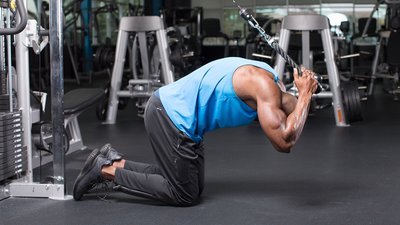Doing crunches on a cable apparatus offers one huge advantage over doing them on the floor: The cable allows you to increase resistance, enabling you to train to failure using heavier weights and fewer reps. This increased emphasis on strength and hypertrophy is exactly the kind of workout the fast-twitch muscle fibers in your abs need to get big and carved.
Other than the extra resistance, this version of the crunch is virtually the same as the one you do on the floor, with one exception: If you screw up how you do the crunches, you can completely wipe out all of the great benefits you get from using a cable.
Blunder 1: Not Rounding Your Back
Keeping your back in a neutral or slightly arched position is good form when you're training with heavy loads. After all, rounding your back when you're doing squats, deadlifts, or bent-over rows can damage your spine.
But the problem with maintaining an arched back on ab day is that it prevents you from actively contracting your rectus abdominis (RA) muscles through a full range of motion. If you can't contract your main ab muscles, you're not getting any closer to that rippling six-pack.
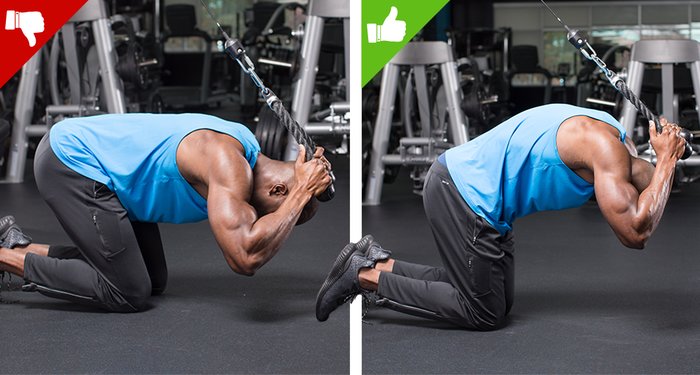
For abs, you need to round your back to unlock the arch in your lumbar spine, which enables you to shorten the RA muscle fibers—especially those in the upper RA region. The lower back muscles (erectors) are antagonists to the rectus abdominis: when one is contracting, the other is being stretched. If the erectors can't stretch, the abs can't contract. And if they can't contract, they can't grow. It's as simple as that!
Blunder 2: Pulling With Your Hands
This mistake is subtle enough that a lot of people keep making it until someone points it out. To make sure you're working just your abs, hold the rope ends in the same position relative to your head as you go through the entire range of motion on each rep. Don't let the rope drift up away from your head on the negative, upward portion—only to pull it back down next to your head as you contract.
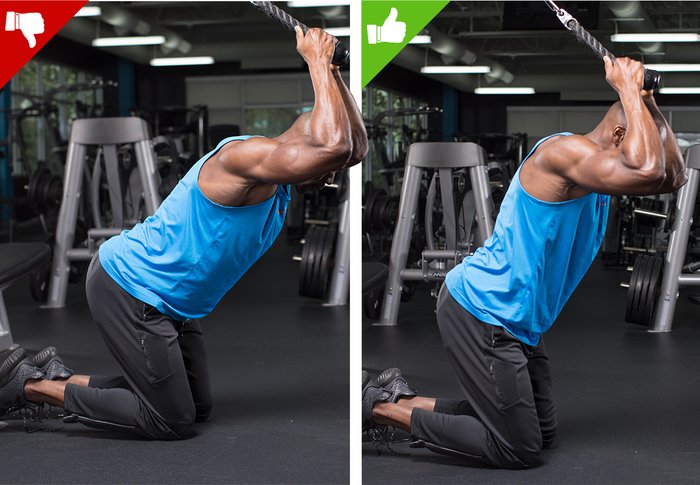
To do a proper cable crunch, you need to fully isolate your abs. So as you begin the exercise, hold the ends of the rope beside your head, and then lock everything in place—everything! Your upper body and arms should move as one single unit, with the rope (and your arms) in the same position relative to your head at the bottom of each rep as it is at the top.
By isolating the RA this way, you make sure your abs are doing all the work, not your arms or shoulders.

Blunder 3: Sitting Back and Down
Don't let your lower body sink back and down as you approach the floor. You lose the isolation on your abs by engaging your shoulders—and by sinking your hips down onto your legs to complete the crunch. Your lower body should be rock solid to ensure movement takes place only in your abs.
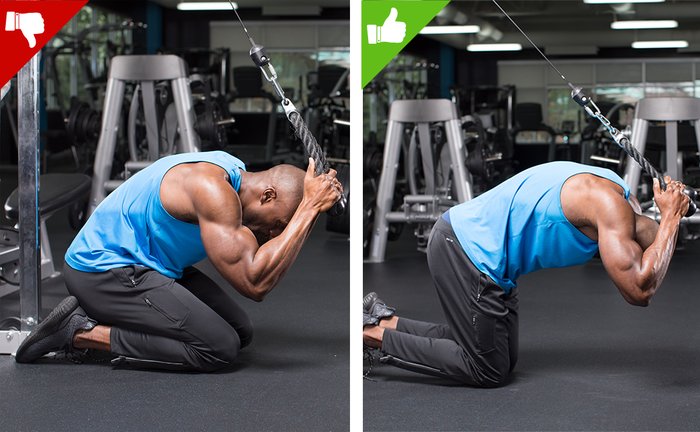
Blunder 4: Sinking Your Chin Into Your Chest
Contracting your abs might seem to have nothing to do with flexing your neck, but it does. I see it a lot—people pull their chins into their chest as they crunch, which puts undue stress on your cervical spine, while providing absolutely zero advantage in terms of abdominal contraction.
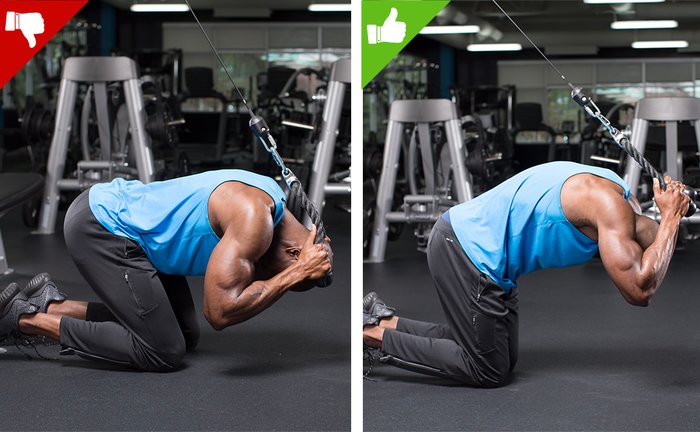
Take this neck movement out of the exercise by imagining a small orange resting between your chin and your sternum. By being careful not to squeeze that imaginary orange as you do the crunches, you are better able to focus on making sure your abdominals are the only muscles involved the movement.



